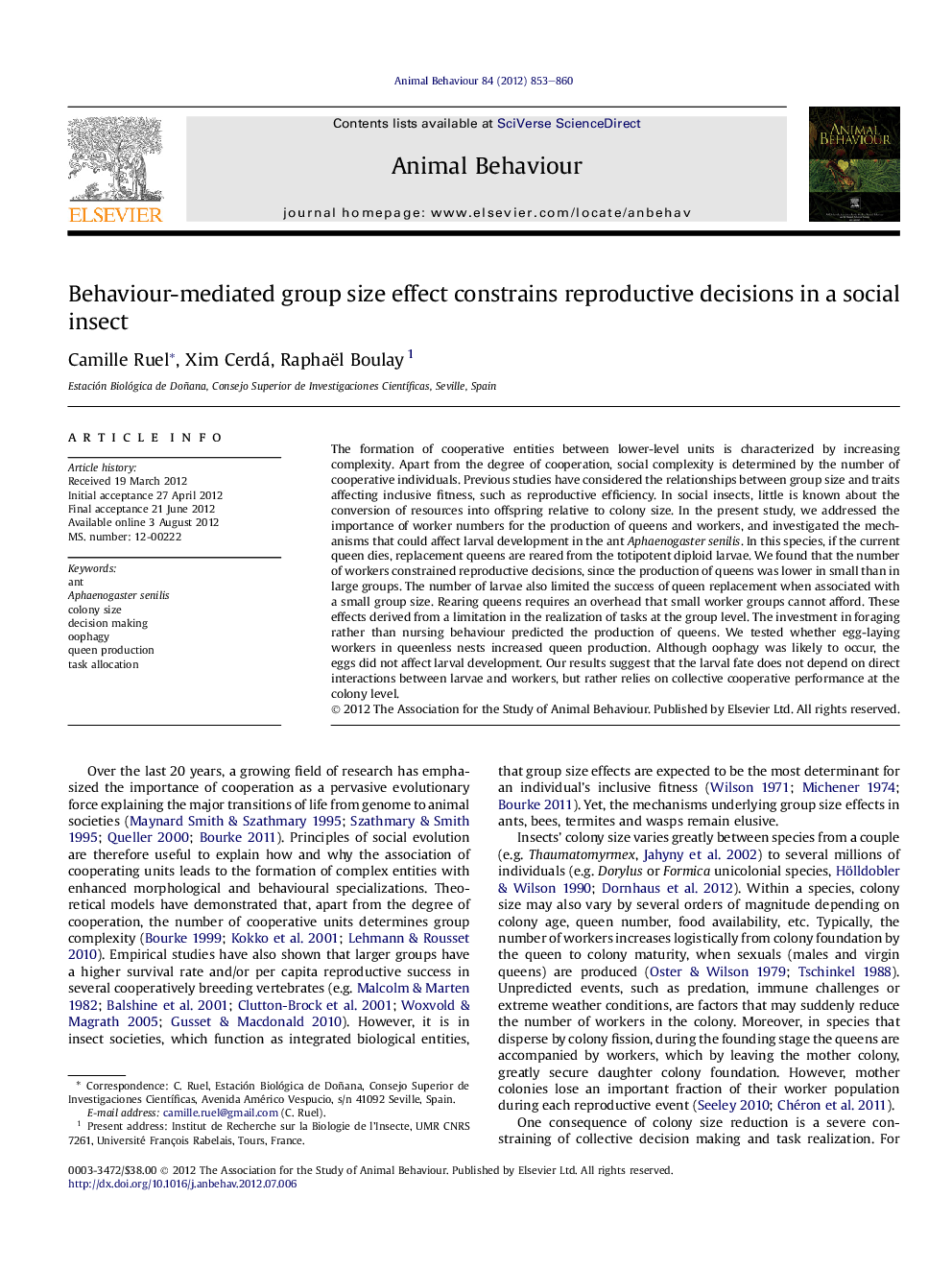| کد مقاله | کد نشریه | سال انتشار | مقاله انگلیسی | نسخه تمام متن |
|---|---|---|---|---|
| 2416522 | 1104279 | 2012 | 8 صفحه PDF | دانلود رایگان |

The formation of cooperative entities between lower-level units is characterized by increasing complexity. Apart from the degree of cooperation, social complexity is determined by the number of cooperative individuals. Previous studies have considered the relationships between group size and traits affecting inclusive fitness, such as reproductive efficiency. In social insects, little is known about the conversion of resources into offspring relative to colony size. In the present study, we addressed the importance of worker numbers for the production of queens and workers, and investigated the mechanisms that could affect larval development in the ant Aphaenogaster senilis. In this species, if the current queen dies, replacement queens are reared from the totipotent diploid larvae. We found that the number of workers constrained reproductive decisions, since the production of queens was lower in small than in large groups. The number of larvae also limited the success of queen replacement when associated with a small group size. Rearing queens requires an overhead that small worker groups cannot afford. These effects derived from a limitation in the realization of tasks at the group level. The investment in foraging rather than nursing behaviour predicted the production of queens. We tested whether egg-laying workers in queenless nests increased queen production. Although oophagy was likely to occur, the eggs did not affect larval development. Our results suggest that the larval fate does not depend on direct interactions between larvae and workers, but rather relies on collective cooperative performance at the colony level.
► We studied importance of group size on reproductive decisions in the gipsy ant.
► Number of workers constrained production of queens.
► Investment in foraging rather than nursing predicted production of queens.
► Worker-laid eggs did not affect larval development.
► Larval fate relies on collective cooperative performance at the colony level.
Journal: Animal Behaviour - Volume 84, Issue 4, October 2012, Pages 853–860